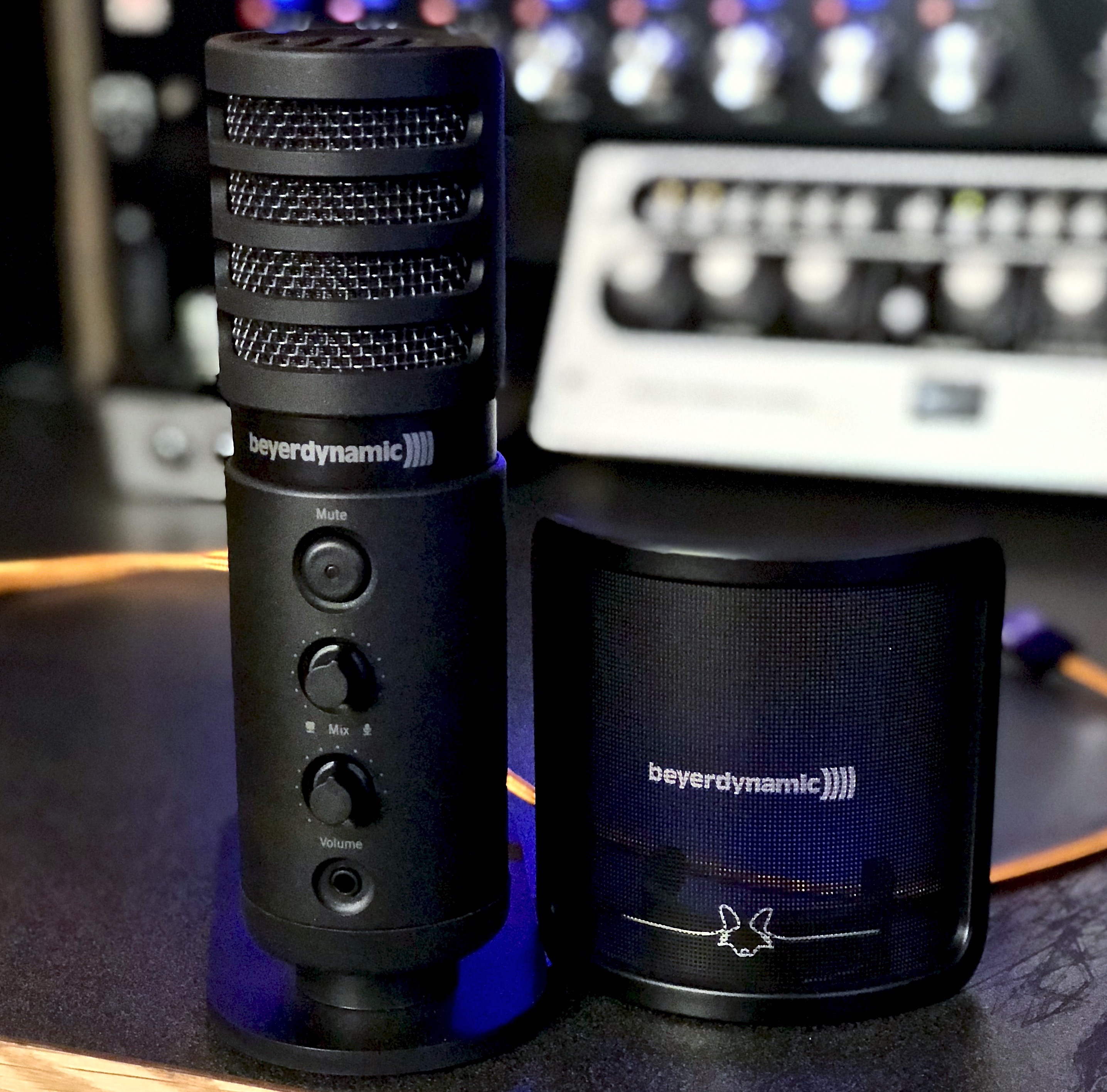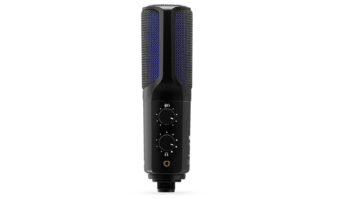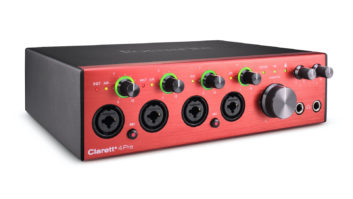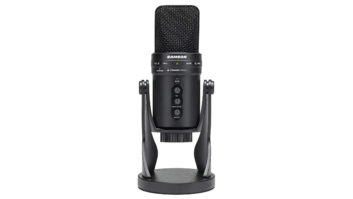
In my travels and reviews, I’ve always found USB mics to be incredibly convenient, if not really all that great sounding. Since these mics are often used by novices making their first forays into pro audio, they have to possess a very user-friendly feature set and still capture worthy audio across a pretty wide set of circumstances. beyerdynamic seems to have carefully straddled that elusive line between consumer convenience and pro performance with its FOX portable USB microphone.
The FOX is a large-diaphragm, pressure gradient condenser mic using the new(ish) USB-C connection and recording up to 96 kHz at 24-bit. FOX connects directly to your recording device digitally with plug-and-play convenience, as in no drivers required (iOS, Mac or Windows). Acting as a DAW “interface,” one monitors the recording via FOX’s built-in headphone amp, 1/8-inch mini-plug headphone jack, and volume control; selecting DAW playback, direct zero-latency monitoring from the mic or a continuously variable blend of the two. A backlit Mute button (a “cough button” for live broadcasters) flashes when the mic is muted.
The rear of the mic has the USB connection and a single control, a high- or low-sensitivity switch. A perforated-plastic pop filter clips directly onto the mic at a 1.25 inches from the diaphragm. The mic can be stand-mounted or attached to the provided desktop stand, a thin plastic foot and tilting joint that securely screws to the mic. Self-noise is -107 dB FS (A-weighted), with the rather important maximum SPL hard to exactly determine, as it is rated at 130 dB broadband and 97.5 dB at one kHz.
I hooked the FOX up to my MacBook Pro with the supplied 3-foot USB cable and noticed what a nice woven-braid cable it was and found USB-C to be convenient with its “no wrong way” connection. I selected FOX for system input and output, and once in my session (with MOTU’s Digital Performer 9.52), I was able to record at 96 kHz with 64 sample latency, as 32 samples wasn’t achievable without dropouts and freezes. In order to not have to fiddle with the mic’s controls too much, I monitored a 50/50 blend between DAW playback and live sound directly off the mic, with the DAW set to not pass input signal through, only playback.
I set up in my living room just like a singer/songwriter (with my Taylor acoustic) or a podcaster might, with the FOX set for high gain. At about 1.5 feet out, the sound was a little roomy and with just enough level; at 6 inches away, some moderate proximity effect kicked in for a fuller sound and decent levels. At 3 inches out, my headphones started to noticeably distort (although the signal recorded to DAW was actually OK) and when right up at the pop filter, the cans were blown out, but the recorded signal was actually OK. Plosives began to be an issue when closer than 6 inches out, but the mic took level surprisingly well, capturing my loud singing and yells without distortion up until about 6 inches out. A little tasteful DSP seemed to be taming dynamics, the tonal balance was reasonably flat and a nice blend was found between guitar and voice.
I was able to go straight into some overdubs of voice, guitar and percussion with this setup very easily, with only adjustments to mic gain and the DAW/mic headphone balance. I found the tilt mechanism to be nice and snug, too; once in place, the mic stayed in place. The plastic foot/tilt is easily removable and the large flathead screw is made to be removable with a coin as a screwdriver.
The hi/lo gain switch is easy to flip as it’s the only control on the mic’s rear, so I flipped it and found the mic to handle loud levels better than expected, with only 97.5 dB of SPL handling. My yells were now translated cleanly right up until I was nearly touching the pop filter and even then, they only barely distorted. Despite what had to be some serious DSP level containment, the sound actually held together well. I was hoping that FOX could handle band practice SPL, but I’m afraid that didn’t work out; placed in the center of the room, three feet off the floor on a small table, my recording of just drum kit was slightly squared-off and clipped and it only got worse with bass, guitar, vocals and so on.
Fit and finish were excellent on the whole package (the mic itself feels heavy for its small size, and sturdy), even though I have some durability qualms that can’t be answered just yet. That plastic desktop stand is stable enough, but it seems like it might not hold up to backpack-abuse and doesn’t do much to prevent bumps and thumps. Likewise, the pop filter works pretty well, stopping plosives up until about four or five inches out, but it is also thin and seems like its snap-on clip might snap off; only time will tell.
As much as I liked FOX’s frequency balance, sensitivity and cleanliness, I did find myself wishing for more headphone amp gain, as the amp seemed to clip before the mic does. For that matter, two levels of mic gain seemed not quite sufficient, as continuous variability would be preferred. And finally, singer/songwriters can be content with cardioid-only directionality, but omni, stereo or figure-8 patterns would be quite valuable for podcasters/interviewers and their guests/subjects (although the requisite second or third diaphragm would make for a more expensive mic, perhaps a “deluxe” model).
At $179 (direct), FOX is mid-priced in the USB mic market, but a better performer than most. In this sphere, the Blue Yeti is the most popular amongst podcasters for its multiple polar patterns, loud headphone amp and continuously variable gain, but it is large, heavy and only records up to 48 k at 16-bit. Many lower-priced USB models don’t offer the direct monitoring, the “interface” features or frankly the sound quality. In comparison, the FOX’s strengths appear to be its portability, convenience and very high sound quality, making it the wise choice for singer/songwriters (but not bands), for solo pod/broadcasters (but not groups) and for those who demand high fidelity even if it costs a little more.
beyerdynamic • https://north-america.beyerdynamic.com







